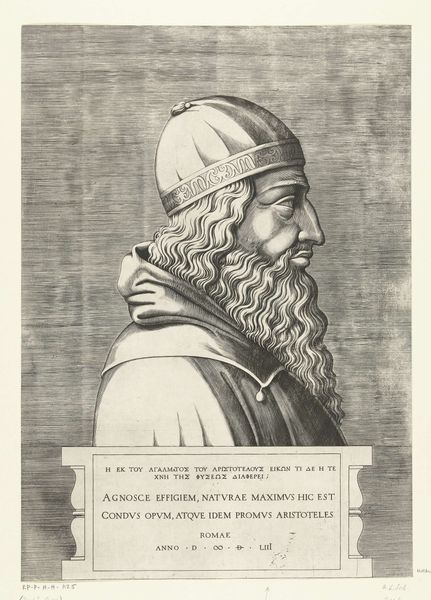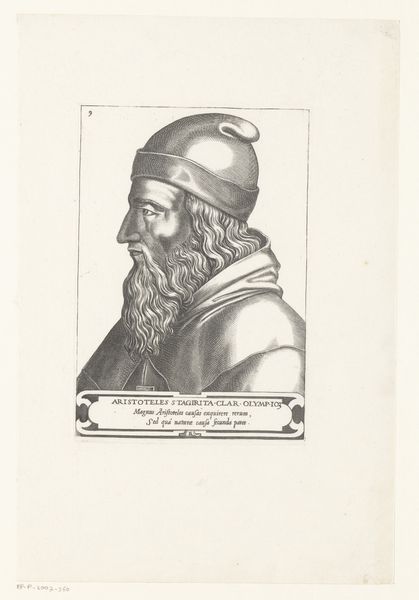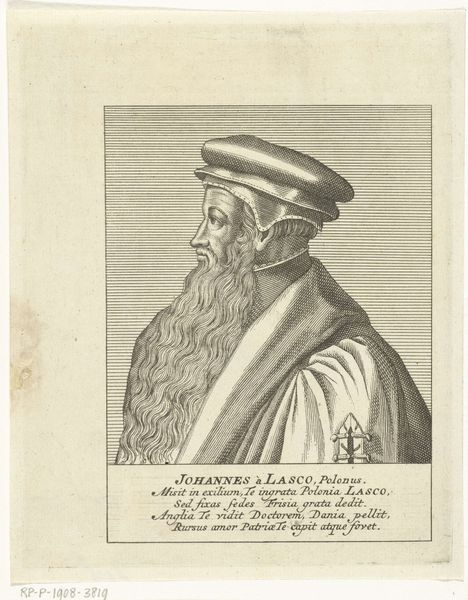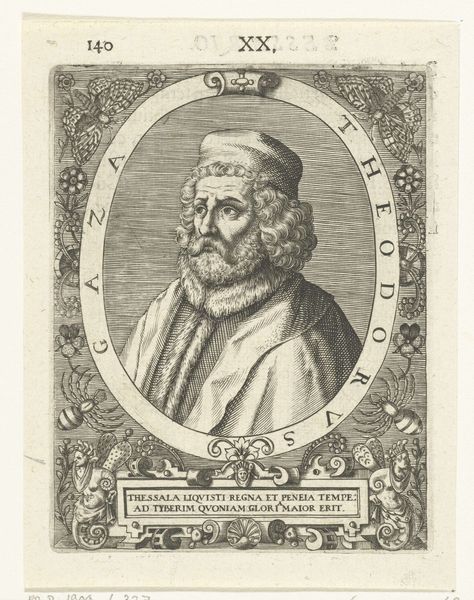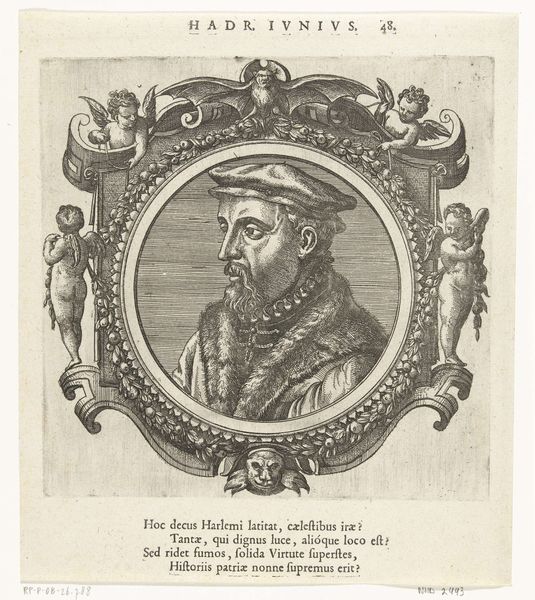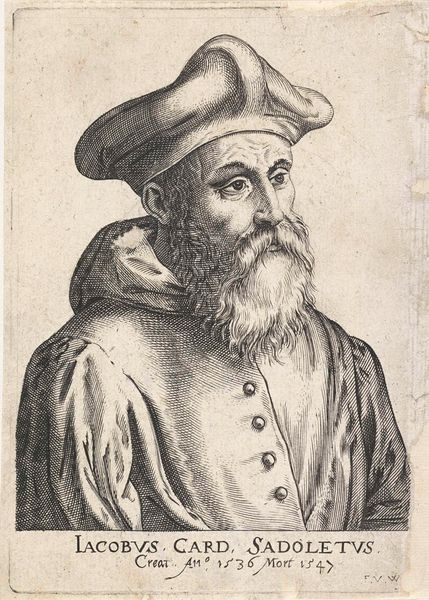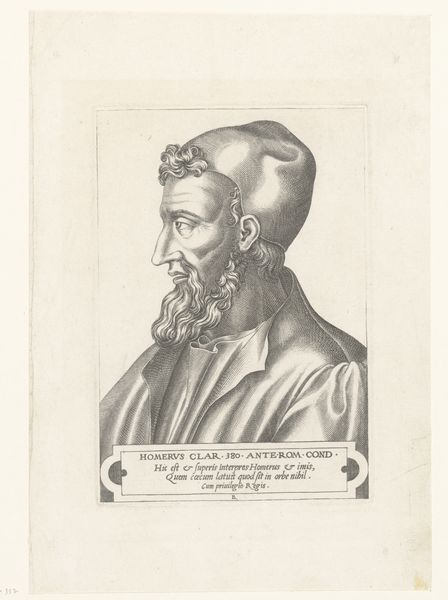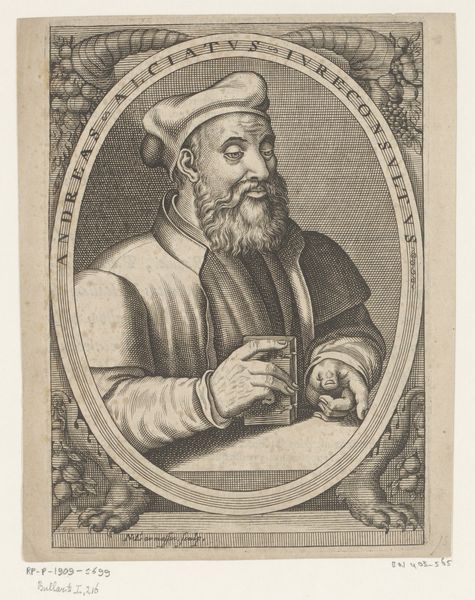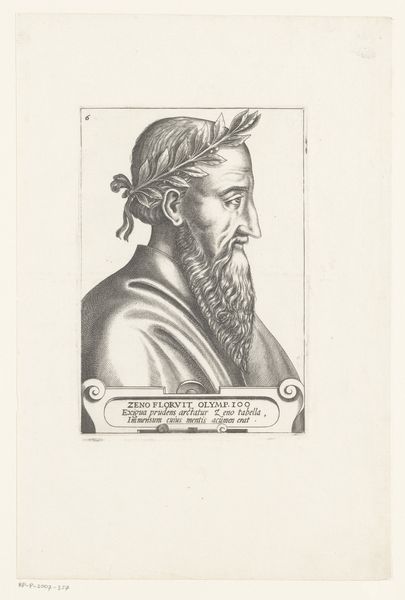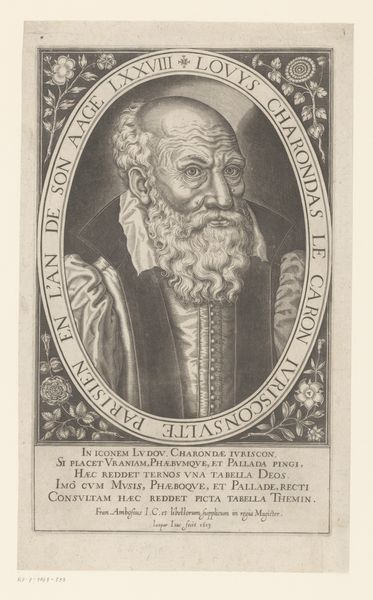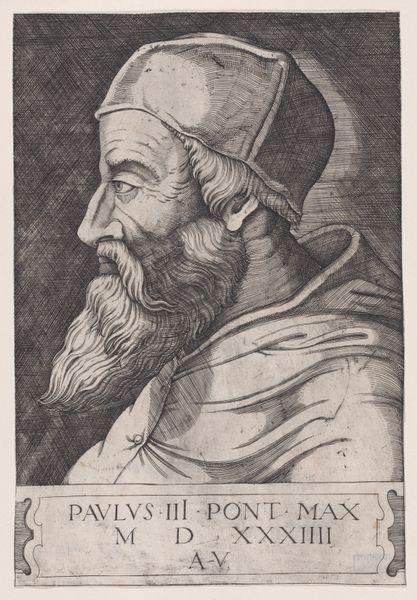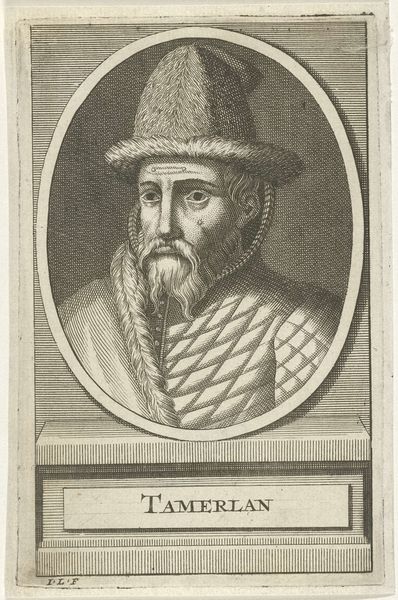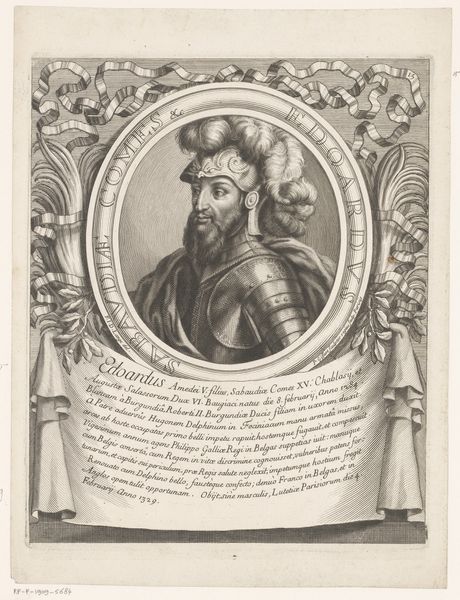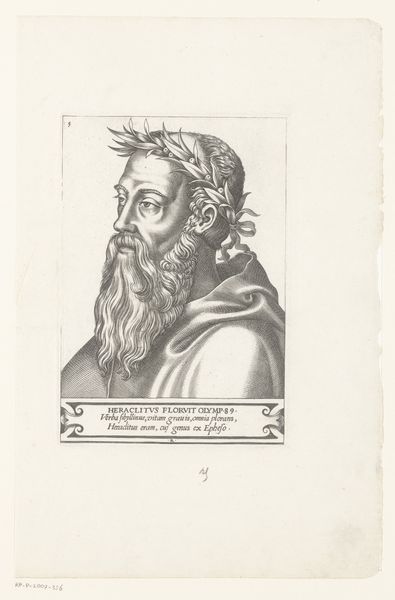
print, engraving
#
portrait
# print
#
caricature
#
11_renaissance
#
portrait drawing
#
history-painting
#
italian-renaissance
#
engraving
#
realism
Dimensions: height 349 mm, width 227 mm
Copyright: Rijks Museum: Open Domain
This engraving of Aristotle’s bust was made in 1546 by the Italian artist Enea Vico. It’s an image that takes us to the heart of the Renaissance’s rediscovery of classical antiquity. During this period, ancient Greek philosophers like Aristotle were seen as intellectual giants, offering wisdom that could guide contemporary society. Vico's engraving isn't just a portrait; it's a statement about the value of ancient knowledge and its relevance to 16th-century Europe. The text inscribed below the image reinforces this idea, celebrating Aristotle as a master of nature and a source of profound insights. The engraving also speaks to the rise of print culture. By reproducing and circulating images of classical figures, artists like Vico played a key role in shaping cultural values and promoting the study of antiquity. Understanding this artwork requires us to consider the intellectual climate of the Renaissance, the role of printmaking in disseminating knowledge, and the ways in which classical figures were used to legitimize contemporary ideas. We can learn more by researching the artist, the context, and the classical figure himself.
Comments
No comments
Be the first to comment and join the conversation on the ultimate creative platform.
